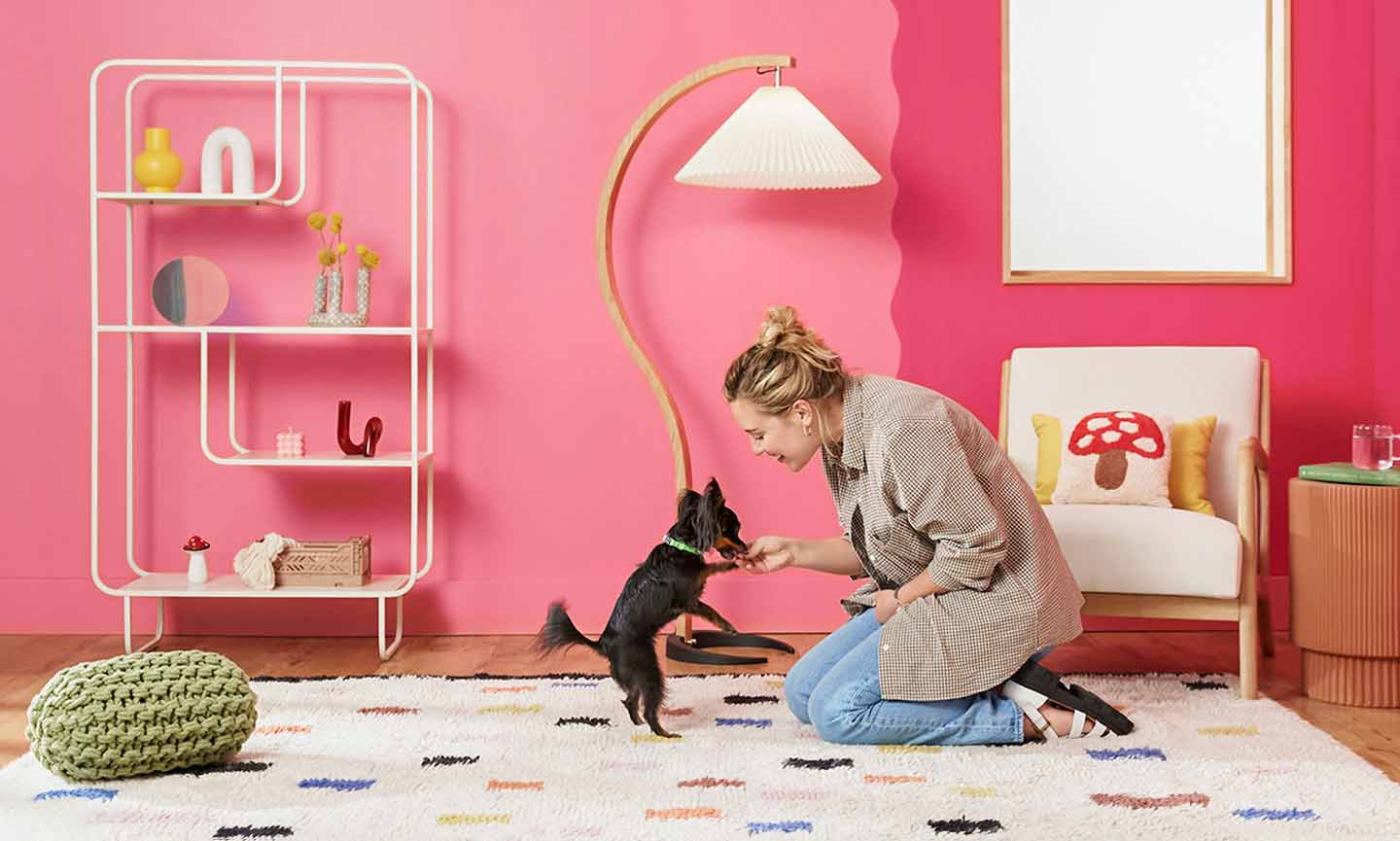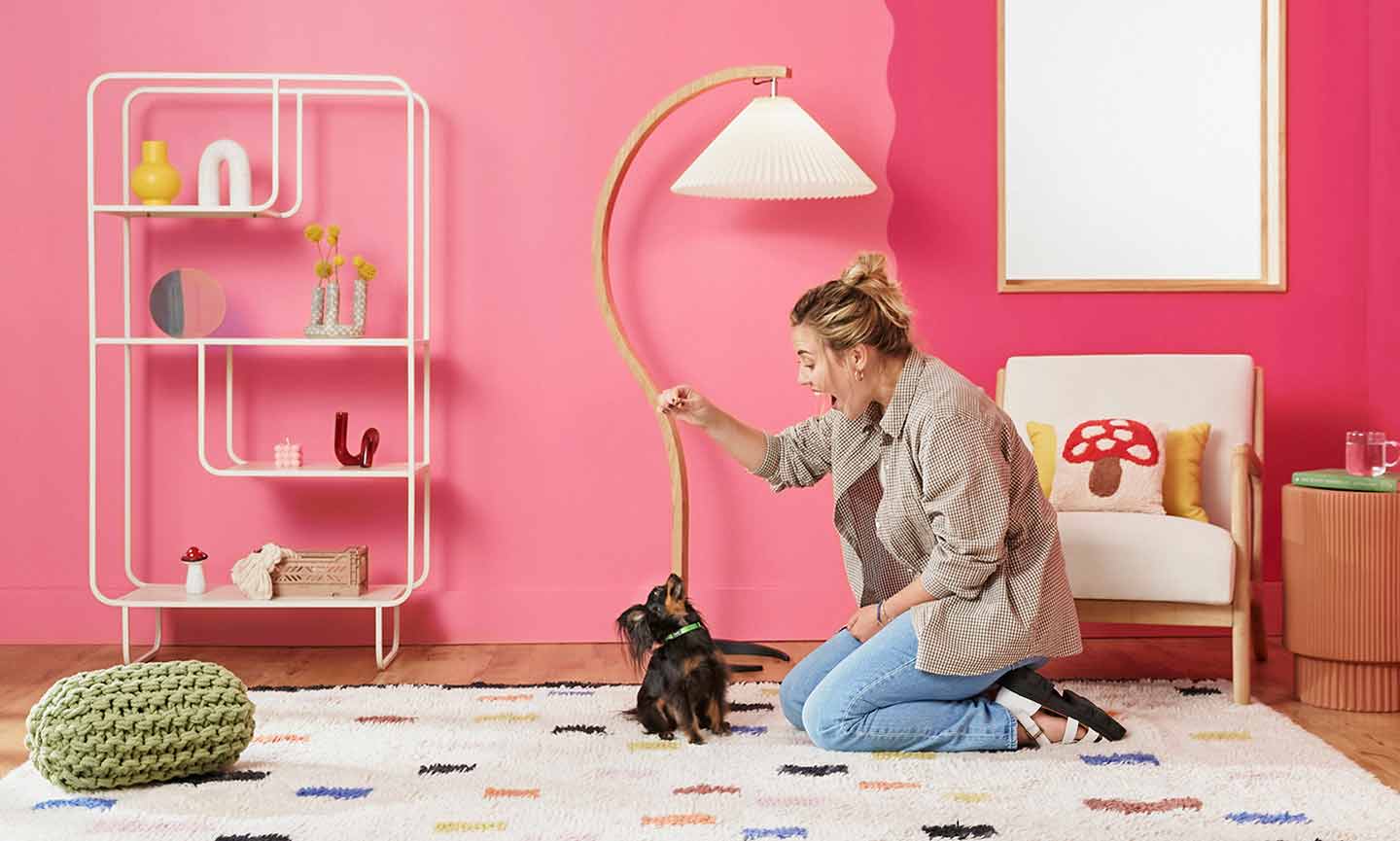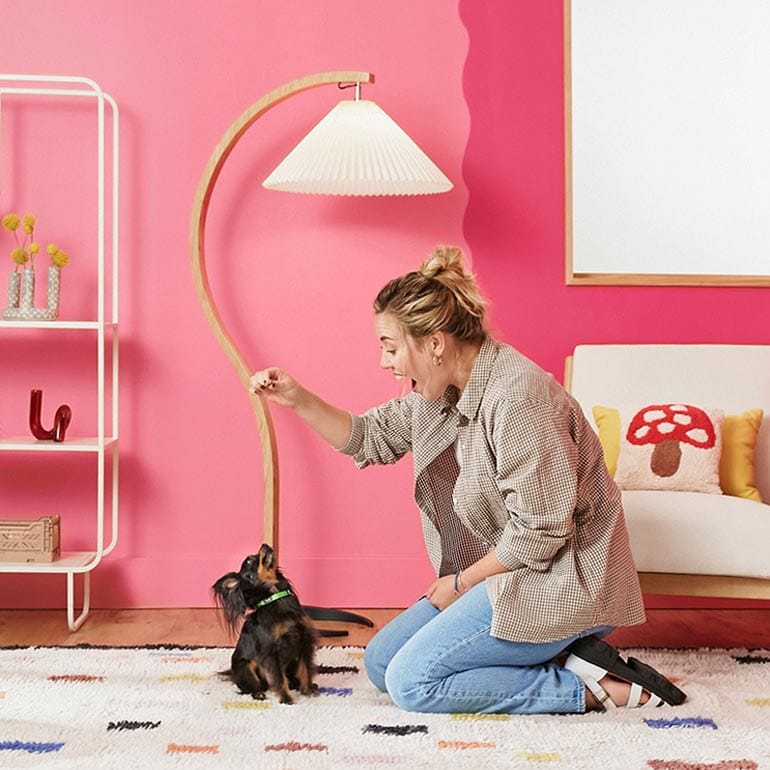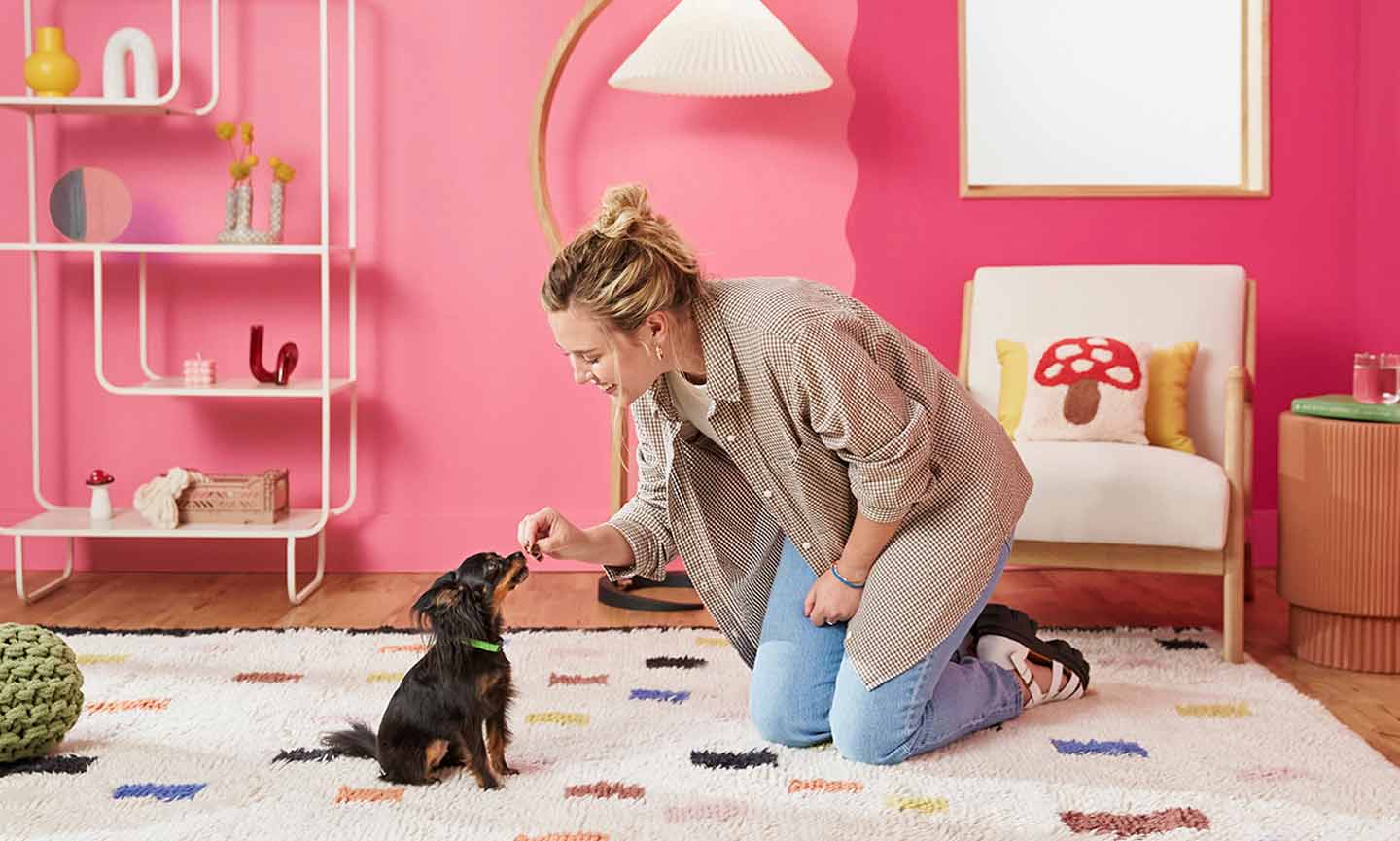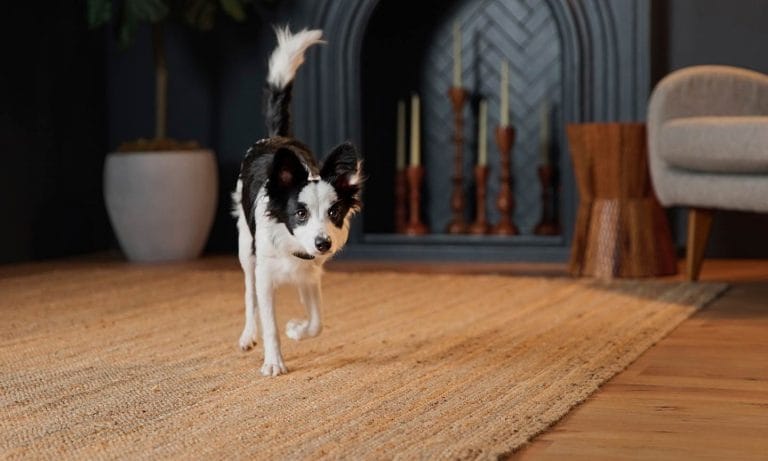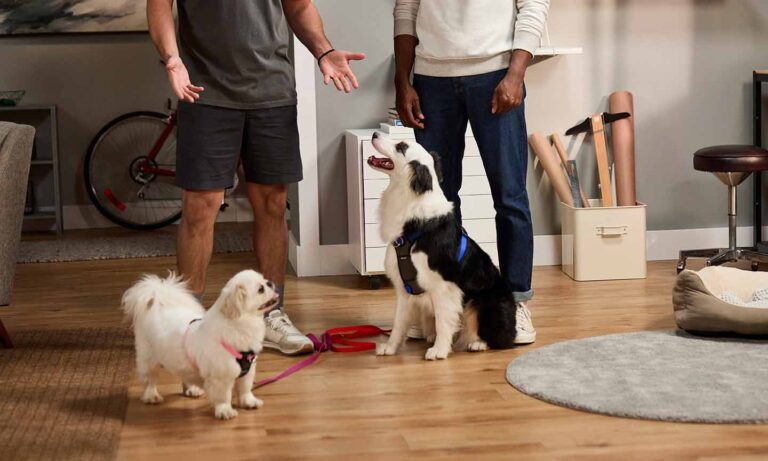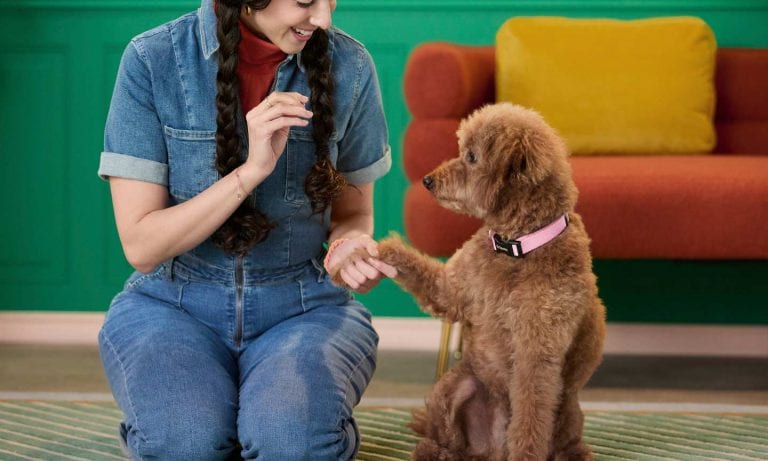An essential part of raising a solid canine citizen is basic dog training, and we’d argue that knowing how to teach a dog to sit is one of the most important “tricks” out there. Not only does teaching your dog the sit command lay the foundation for ongoing dog training, but it also curbs your pup’s impulses and keeps them out of harm’s way. In that sense, it gives you both a little more freedom and flexibility in your day-to-day lives.
For example, you can have your dog sit on cue when company’s over, when you’re running inside a convenience store for a quick errand while your dog is on-leash, or when your pup is rambunctious and could benefit from calming down. For the ins and outs on teaching a dog to sit—including how to teach a puppy to sit—read on!
Click the buttons to jump to each section:
Supplies for Teaching a Dog to Sit
✓A quiet space
✓Training treats for dogs
✓15 to 20 minutes per day
✓Patience
✓Enthusiasm
How to Teach a Dog to Sit
Teaching your dog the sit command is easier than you might think. It just takes patience and consistency. Depending on your dog or puppy’s attention span and interest in training, these training sessions can be either once a day or broken up throughout the day into multiple sessions. Here’s our experts’ recommended steps for teaching a dog to sit.
1 Hold a treat in your hand.
2 Move the treat above the dog's head and say the word "sit."
Once your dog is focused, slowly move the treat up and slightly behind their head. (Aim for about three inches above them.) This should cause your puppy to move backward before eventually sitting.
By moving the treat only about three inches up, it’s still obtainable and desired. And, since you’re moving it up, your dog will naturally look up, which puts their butt down on the ground. If this doesn’t work, try taking a step closer to your dog so you’re positioned above them and they have to look up even higher. This tends to naturally lead to a sitting position.
3 Once in a sit, praise your dog!
4 Repeat this process.
Things to Avoid
Whether you’re learning how to teach a puppy to sit or working with an adorable senior pup, you’ll need to practice patience and enthusiasm.
- Don’t spend too long in a training session. Designate about 15 to 20 minutes per day to teach this command, making sure you’re in positive spirits.
- Never punish your dog for not learning quickly enough; this process takes time.
- Always align the dog sit command itself with positivity. For example, avoid forcing your dog into the sit position in a stressful situation, and never force your dog to sit for long periods of time.
How to Teach a Dog to Sit: FAQs
Q:
Can I teach my dog to sit without treats?
A:Yes, it’s entirely possible to teach your dog the sit command without treats. Instead of treats, you’ll need an object that has value to your dog, such as a toy or your very own enthusiasm. Just like people, dogs are individuals and can be motivated by a variety of things, so it’s important to identify what your dog values most. That said, many dogs are very food motivated, so you might find your training sessions are easier with a tasty treat in your hand.
Q:
Can I teach a senior dog to sit?
Q:
How can I teach a dog to sit from the “down” position?
A:Start by watching your dog and letting them move to the sit position from the down position on their own. Once they do, reward your dog with a treat or praise. After a week or two of doing this, you can add the word “sit” as they move up to a sitting position. Another way to teach your dog how to sit from the down position is to use a treat to lure them into an upright sitting position. Say the word “sit” as they move up, and make sure to reward them when they do. Remember, the goal is to associate a treat or reward with the cue itself.
The Bottom Line
Working with your pup on obedience training not only helps them to develop good manners, but it’s also an important part of building trust between you and your Best Furry Friend—and that helps strengthen your BFF bond. Keep it fun! Incorporating play goes a long way in building a solid and productive relationship with your pet.
Read More
Share:



